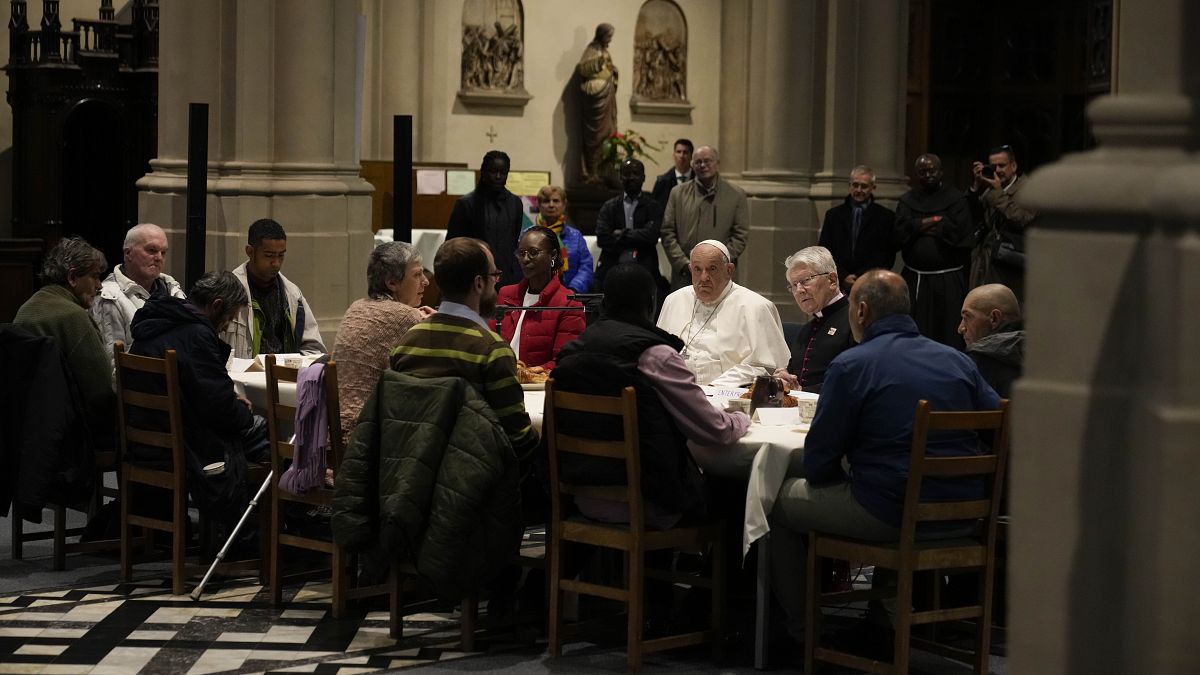Entertainment
She made an honest movie about Poland's migrant crisis. That's when her problems began
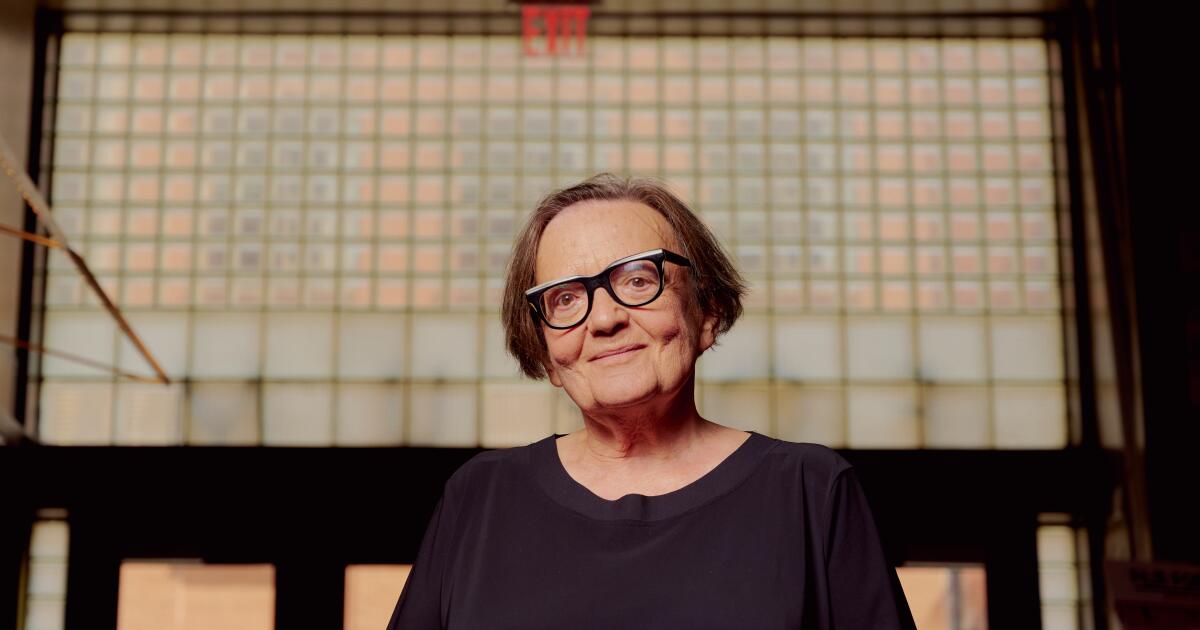
It is 10 p.m. in Berlin and Polish director Agnieszka Holland, just back from a long day on the set to take part in a Zoom interview, is too exhausted to care that she’s inadvertently sitting in front of a cut-out of Mary Poppins, of all people, in her Hollywood-themed hotel room.
Holland is visibly tired, and no wonder, given the tight production schedule on her still-shooting feature, “Franz,” which she calls “kind of an experimental biography of Franz Kafka — fragments to touch the mystery.” But the longer she talks about her extraordinary latest film, “Green Border,” set to open Friday in Los Angeles, the more her passion for the project takes over and the fatigue almost magically fades away.
A stunning refugee story, “Green Border” is both an extension of frequent themes for the writer-director (whose credits range from 1990’s “Europa Europa,” the best known of her trio of Oscar nominations, to three episodes of HBO’s landmark “The Wire”) and something that feels completely new. It also proved to be controversial even for Holland, calling forth a level of hostility in her native land that the 75-year-old filmmaker said was without parallel in her decades-long experience of uncompromising work.
“It created a lot of hate in Poland coming from the Polish government,” she remembers. “In my quite long life I’ve had very difficult experiences, but the hate campaign coming from officials was unprecedented. It was unpleasant for me, I had a lot of threats,” so much so that she found it necessary to employ full-time bodyguards.
A scene from Agnieszka Holland’s “Green Border.”
(Agata Kubis)
The criticism started at the top, from Jaroslaw Karczynski, head of Poland’s then-ruling Law and Justice Party, who in 2023 called the film “shameful, repulsive and disgusting.” Top Polish ministers labeled “Green Border” “intellectually dishonest and morally shameful,” compared it to Nazi propaganda films and Holland to top Third Reich functionary Joseph Goebbels, and in one case concluded that the director had forfeited the right to call herself Polish.
The government went further, denying “Green Border” a best international film Oscar entry, and mandating that theaters precede their showings of the film with a two-minute short putting forth the official point of view. “The government made some propaganda clips, showing how wonderful the Polish state was,” Holland relates. “Some cinema owners refused to show it, which was very courageous, and one government-supported cinema that had been blackmailed into showing it said, ‘We will show it, but with a caption saying all money from the showing will be given to activist groups.’”
Ironically, Holland says of the threats, “though it was unpleasant for me, they were so violent, so aggressive, by the end they overdid it and helped the movie at the box office,” making “Green Border” one of the year’s top grossers in Poland. “And afterwards, I never had such long and important discussions with the audience, people staying for hours after the screening. Our courage to speak openly gave courage to many people. It was very touching to see this.”
The film behind the fuss, winner of a special jury prize in Venice, is closely based on a real-life situation that is, appropriately enough, uncannily Kafkaesque. Starting in 2021, Aleksandr Lukashenko, longtime ruler of Poland’s neighbor Belarus and close ally of Russia’s Vladimir Putin, made it surprisingly easy for Middle East refugees to fly to his country. Once they arrived, they were taken straight to the border and literally pushed into Poland.
Except it wasn’t the Poland they might have expected. It was the Green Border, a heavily forested area described by the New York Times as “a two-mile-wide exclusion zone around the border” which featured “a 116-mile-long, 18-foot-high barbed wire fence” that was heavily patrolled by numerous Polish border guards. They rounded up the refugees and pushed them back into Belarus, from which they were pushed back into Poland. This back and forth and back was repeated, sometimes ad infinitum, with beatings, robberies and deaths thrown into the mix.
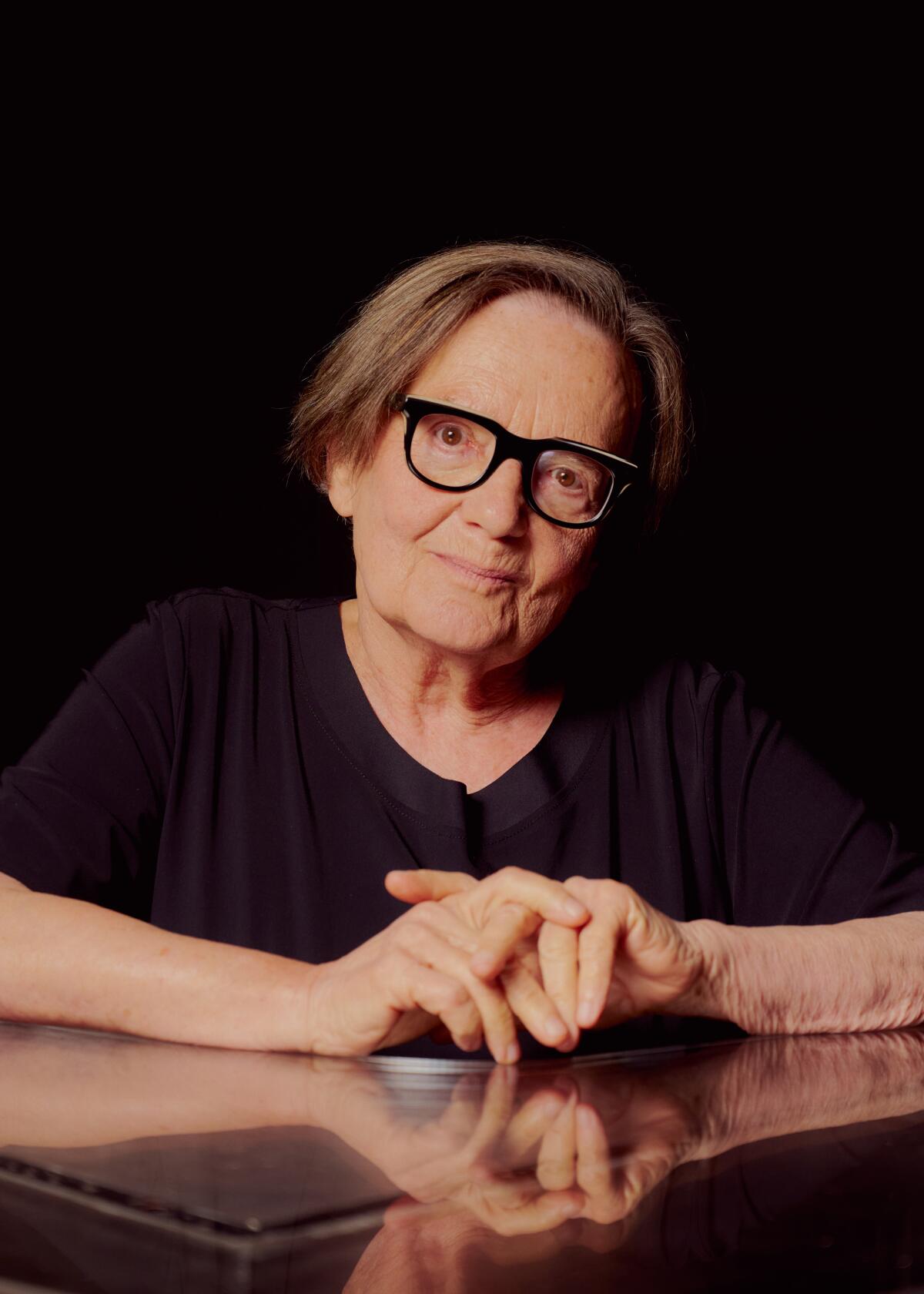
“The past which was never healed is frankly still present,” says Holland, photographed at New York’s Film Forum in June.
(Evelyn Freja / For The Times)
Holland, who is deeply versed in the dynamics of the situation, says things began with the Syrian civil war of 2015. “Europe is deadly afraid of the arrival of people where the color of the skin, the religion and culture are different,” she says. “And that was immediately used by populist right-wing governments to create an atmosphere of fear and danger.”
Lukashenko (with Putin’s likely support) opted to make things worse, opening that corridor for refugees “to destabilize Poland and Europe, to prove that the Europe of democracy and human rights is bull—,” the director continues.
Moreover, Holland relates, “the Polish government forbade access to humanitarian organizations and all media. That meant it was not only impossible to help these people lost in the forest but also to document the cruelty of the border guards.
“Karczynski, the main political force in Poland, said something that was relevatory to me. ‘Americans lost the war in Vietnam when they allowed the media to go there and send back pictures of children burnt by napalm. We will not allow images to go out.’ So I felt it’s my responsibility to try to tell that story while it was still going on.”
Not only that, Holland was determined “to tell the story from the human perspective. It’s important to me, the feeling of reality.” Holland and her two co-screenwriters, Gabriela Lazarkiewicz-Sieczko and Maciej Pisuk, “spent hours and hours talking to different people. We finally succeeded to speak secretly to border guards, so they could share their experience, their point of view.”
Because of the controversial nature of the film, the aspect of it which took the longest was the raising of funds, which took an entire year and even included money from an American producer, Fred Bernstein. “Green Border” ended up being a Polish-French-Czech-Belgian co-production, and Holland, who for the first time served as a producer as well, said the experience gave her a renewed appreciation of the complexity of European film production.

A scene from the movie “Green Border.”
(Agata Kubis)
The resulting movie tells the story from the vantage point of three distinct groups. Introduced first is a family of refugees from Syria, hoping to eventually join a relative in Sweden. Then there is a Polish border guard who wants to be doing the right thing but is not sure what that is. Finally there is a therapist who gradually takes on an activist role in her border town. Adding to the drama is a coda showing how Poland’s reaction changed when it faced another influx of refugees, this time from racially similar Catholic Ukraine.
Because Holland was so concerned about verisimilitude, she took special care with the casting. “The actors were professional actors but also real Syrian refugees,” she explains. “They did not have to imagine how the Syrians felt, they knew what it meant.” And for the local activist, Holland chose Polish actress Maja Ostaszewska, who in her off-screen life “was helping at the border with human rights activities.”
Shot in only 24 days in luminous black and white by cinematographer Tomasz Naumiuk, “Green Border” teems with urgency and immediacy. “It was a very special kind of work, very collective,” Holland recalls. “Some days we worked with two parallel units, with two young Polish women as directors. We did it in secret from the Polish government but we found a unity.”
Besides her “Europa Europa,” Holland has made several films dealing with Holocaust scenarios, and she admits to at one time believing that “the experience of the Holocaust, the horror humanity faced in seeing themselves capable of such things, created some kind of a vaccine against nationalism. But since Sept. 11, the vaccine doesn’t work anymore, that immunity evaporated. Slowly old habits, old demons are coming back.”
Adding to that feeling for Holland is the coincidence that the Green Border area is quite close to the former location of Sobibor, a World War II German death camp that was the site of a famous prisoner rebellion and escape. “When they escaped, the people from that camp looked exactly like these refugees did,” she notes, “and they escaped exactly to that forest.”
The possibility of the world backsliding to a horrific past is very much on the mind of both “Green Border” and its director. “It’s like when a tooth is sick, it gets worse and worse,” she explains. “If you don’t treat it early enough you are going to lose it. The past which was never healed is frankly still present.”

Movie Reviews
Caitlin Cronenberg’s ‘HUMANE’ (2024) – Movie Review – PopHorror
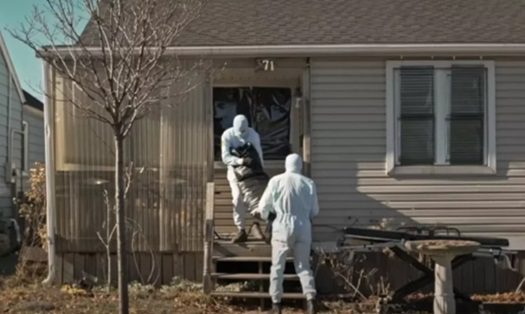
Humane was written by Michael Sparaga (United We Fan 2018) and stars Jay Baruchel (Random Acts of Violence 2019) Emily Hampshire (Mom 2024) and Peter Gallagher (American Beauty 1999). The story follows the upper crust York family in a dystopian world, where the government requires volunteers to be killed to control the population. Those that volunteer have their families rewarded with tons of money upon their death. The heads of the York family gather their children to tell them the news, and all hell breaks loose.
Only one of the Yorks sticks to the death pact, so the government must collect a second body. Trapped in the desolate mansion, the family must now either work together or fall apart, as secrets and tension mount.
Humane hits a home run in terms of the chemistry and clear delineation of its characters. Every member of the York family has a rocky history, clear motivation, and can be seen for who they are, very quickly. The brother and sister dynamic and family toxicity feels real and is worn on each of their faces. This dialogue-heavy success is well paced, and leads to some genuinely funny dark comedy, without ever killing the tension that it builds.
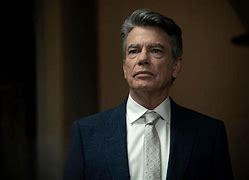
Humane also uses its rooms to isolate the characters and peel back the curtain on their relationships. Cronenberg clearly thrives in the chaotic world she builds, just like her father. But unlike David’s body-horror, Caitlin weaves societal statements into her work. Themes of classism, racism, governmental divide, and greed are woven expertly into this game of survival. With all of the subtext it provides, it would feel dystopian not to have this movie in the upper crust of your horror lists by year’s end.
Humane is currently streaming on Shudder.
Entertainment
LA Librería, L.A.'s only Spanish-language children's bookstore, celebrates new space

Inside LA Librería’s new West Adams location, a hush falls over the thick crowd of multigenerational families. Angelica Sauceda, a librarian at Anaheim Public Libraries, faces an audience of young readers ready to hear the bilingual story of “La Siesta Perfecta.”
“Es hora,” she calls out. It’s story time.
On Sunday, the only children’s Spanish-language bookstore in Los Angeles invited customers to celebrate the grand opening of their biggest storefront yet. Back in 2012, founders Chiara Arroyo and Celene Navarrete set out with the goal of providing quality, imported Spanish-language titles to local schools and bilingual families. And their newly opened 2,400-square-foot location marks the moment they have been patiently waiting for — the ability to bring their community together in a space that finally fits.
“When we were an appointment-only showroom, people were always knocking on the door trying to get in. When we opened a small storefront, we didn’t have enough space for events. Most of the time, all the kids would have to be inside and all the parents wait outside,” said Arroyo. “We needed more space to move.”
Children listen during story time at LA Librería on Sunday, where customers were invited to celebrate the bookstore’s largest space yet.
(Sarahi Apaez / Los Angeles Times)
Arroyo and Navarrete first crossed paths at their children’s elementary school, Edison Language Academy. Navarrete, a professor of coding and computer information systems at Cal State Dominguez Hills from Mexico, and Arroyo, a former film critic from Spain, both volunteered at the school’s book fair. Given the dual-immersion aspect of the school, they remember how few Spanish titles were being sold.
“We were surprised. We didn’t like the selection very much. Some [books] had mistakes or were full stereotypes,” Arroyo said. “Given how many people in L.A. are interested in learning Spanish or raising children in a multicultural environment, it was shocking that you couldn’t even find books in Spanish in a bilingual program.”

LA Librería co-founders Chiara Arroyo and Celene Navarrete at Sunday’s celebration of their larger space. In the early days, they operated their bookstore out of an old hair salon.
(Sarahi Apaez / Los Angeles Times)
Instead of complaining, they took action. With Navarro’s background in technology and Arroyo’s experience in the publishing industry, the two were able to muster enough books together for the next fair, where they had their own curated Spanish-language literature table. Hand-picking each storybook, the pair says they are able to understand the market and the community’s needs so well because they encounter the same difficulties with their own bilingual families. As the word got around, they began selling at schools all around L.A. until officially becoming La Librería in 2012.
As busy parents, the duo couldn’t commit to being in a store for eight hours a day, so they started off with an appointment-only showroom model. Operating out of an old hair salon in West Adams, the demand for their collection only continued to increase. In 2015, they settled into a small office space on Washington Boulevard in Mid-City where they were able to open up a more typical-looking bookstore. They began to host readings and events, but given how many people would show up, they say the space quickly became unsustainable.
“When we were selling at these fairs, many people didn’t even know these kinds of books existed until they saw them. Let alone know they are available in a city like Los Angeles and in their schools,” said Arroyo. “To have access to these books in your family’s language is a huge thing and can open up a discussion, especially because the language has been so stigmatized in the past.”
Skimming the shelves while carrying her daughter, new mother Crystal Morales recalls her own relationship to Spanish. Because of the language’s marginalization, she was taught to understand her parents’ tongue but never to speak it. Now living in La Verne, she wants to ensure her baby can speak both English and Spanish fluently.
“I don’t remember having any Spanish books in my [childhood] home, and now I would say half of the library at home is in Spanish. I am definitely a ‘no sabo kid’ and I don’t want my daughter to grow up the way I did,” Morales said. “Now Spanish is so embraced and the more bilingual you are, the more of an asset it is.”
Today, LA Librería is housed in a 2,400-square-foot space whose hybrid look is part modern style and part old-fashioned facade. With glass front-facing windows and raw wooden bookshelves, the store is filled with anything from graphic novels and picture books to poetry anthologies and adult novels — a new venture for the duo. With over 250 publishers in their index, the shop prioritizes a selection specifically meant for L.A.’s Spanish speakers up to the age of 15.
“We have learned that the book industry puts Latinos in the same box and we try to do the opposite. We try to represent and diversify the selection,” Navarrete said. “They don’t know about the diversity in Latin America. We wanted to reflect that in the collection.”

Averi Johnson, 3, reads a book from LA Librería.
(Sarahi Apaez / Los Angeles Times)
Sheila Pastor, a Spanish teacher in Santa Monica, had barely started browsing the stacks and was already carrying four books. Having taught Spanish for over a decade, the educator says she’s rarely able to find a resource as diverse and accessible as LA Librería. She plans on bringing her students in the coming weeks to experience the store for themselves and participate in a few workshops.
“In the past, I haven’t been able to find many resources, so I often create them myself through board games and stuff,” she said. “I like to see that there’s something for everyone. There’s these huge books with big pictures for the little ones and stories that the older ones will like too.”
When looking through the vast selection, visitors can find stories from almost every Latin American country and even a few in Indigenous languages like Nahuatl and Zapotec.
“When you go to a bookstore in Mexico, you are not asking if they have a book from a different country. Other stores don’t really import from other places. But that’s what makes Los Angeles unique,” Arroyo said.
Going forward, Arroyo and Navarrete plan to expand LA Librería’s workshop programming, host professional development events and continue bringing more publishers into their selection. As they continue establishing themselves as a community hub, literary representation remains their focus.
“People want books from their own countries,” Navarrete said. “And we are confident to tell them, that’s our commitment.”
Movie Reviews
Sathyam Sundaram Movie Review – Gulte

3/5
2 hrs 57 mins | Slice-of-life | 28-9-2024
Cast – Arvind Swamy, Karthi, Sri Divya, Devadarshini, Jayaprakash and others
Director – C Premkumar
Producer – Jyothika, Surya
Banner – 2D Entertainment
Music – Govind Vasantha
96-fame director C Prem Kumar returns to the director’s chair after nearly five years to helm Sathyam Sundaram, a slice-of-life film on relationships and nostalgia. The film stars Aravind Swamy and Karthi in lead roles, who play the titular characters of Sathyam and Sundaram respectively. Sathyam and Sundaram is originally titled Meiyazhagan in Tamil. While the Tamil film is set in Thanjavur and Chennai, the Telugu film’s locations have been changed to Guntur and Vizag respectively. Sathyam Sundaram is produced by Jyothika and Suriya, who have previously backed critically acclaimed films like Soorarai Pottru (Aakasame Nee Haddura in Telugu) and Jai Bhim.
What is it about?
Sathyam (Aravind Swamy) and his family lose their beloved ancestral house in Guntur due to a property litigation in 1996, following which they tearfully leave the town and move to Chennai. 22 years later, Sathyam makes a trip back to Guntur to attend his sister’s wedding. What happens when Sathyam bumps into an overly friendly childhood acquaintance in the village (Sundaram) forms the crux of the story.
Performances
Karthi is the heart and soul of the film and he is the reason why everyone connects with the story. He also elicits the most laughs out of the audience. Aravind Swamy plays an introverted character with a lot of trauma. His screen presence fades a bit when he is with Karthi, but nevertheless, he delivers a strong performance.
Sri Divya and Devadarshini play the wives of these main characters. Despite their limited screentime, they are both endearing and memorable. Rajkiran, as Sathyam’s uncle Sukumar, is extremely relatable and effective, reminding a lot of us of our uncles.
Technicalities
The film has extremely emotional and soul stirring music by Govind Vasantha. The intent and meaning of the original Tamil lyrics of the songs have also been translated competently by Rakendu Mouli.
The film’s original location Thanjavur, with its ancient temples, plays a major role in determining the film’s overall production values. Though the makers of the film have changed the location in the Telugu version to Guntur, it is hard to miss the effect of Thanjavur in the film.
In addition to the friendship between Sathyam and Sundaram, the film also emphasises the relationship these actors share with animals of all kinds, ranging from cats, parrots to bulls and snakes. It adds a wholesome and heartwarming flair to the overall narrative.
The cinematography, by Mahendiran Jayaraju, plays a huge role in conveying the film’s soothing-yet-hard hitting themes. The result makes the film look both real and cinematically beautiful at the same time.
Thumbs up
Karthi & Aravind Swamy
90s nostalgia
Writing
Worldbuilding
Music
Thumbs down
Runtime
Slow paced narrative
Analysis
Sathyam Sundaram is a beautiful trip down the memory lane. Much like the director’s previous film 96 (and its Telugu remake Jaanu), a majority of the film takes place in the space of one night with just two characters.
Movies that take place entirely within the span of a single night fit well in the thriller genre, but clearly, 96 and Sathyam Sundaram are exceptions to this rule. Each dialogue, scene, sub-plot and arc in the film leaves a person with a smile and a good feeling in their hearts.
The film slowly but steadily wins the heart of everyone with its sincere emotions. A couple of scenes in particular, have the potential of making the audience tear up, due to their highly effective and relatable emotionality.
The makers have taken good care to ensure that it appeals well to Telugu audience, with attention to detail given to the dialogues, comedy and lyrics. This film will particularly impress 90s kids, with its bicycle sub-plot, flashback portions in the village and the actors humming iconic 90s songs like Singarala.
The film could have been much easier to enjoy though, had it been 30-40 minutes shorter (the runtime is 177 minutes long). The film’s makers could have also gone for a different title since it gives a spoiler to one of the film’s biggest mysteries. All in all, Sathyam Sundaram is a positive step in the direction of good, soulful cinema. However, those who do not enjoy slice-of-life emotional dramas or three-hour long films must definitely think twice before watching Sathyam Sundaram.
Verdict: Emotional Journey Of Pure Hearts
Rating: 3/5
Related
-

 News1 week ago
News1 week agoToplines: September 2024 Inquirer/Times/Siena Poll of Pennsylvania Registered Voters
-

 Business1 week ago
Business1 week agoVideo: Federal Reserve Cuts Interest Rates for the First Time in Four Years
-

 News1 week ago
News1 week agoVideo: Who Are the Black Swing Voters?
-

 Politics1 week ago
Politics1 week agoDem lawmakers push bill to restore funding to UN agency with alleged ties to Hamas: 'So necessary'
-

 Politics1 week ago
Politics1 week ago'I've never seen this': Top Republican details level of Secret Service 'lack of cooperation'
-

 News1 week ago
News1 week agoElection 2024 Polls: Florida
-

 Finance1 week ago
Finance1 week agoThis ETF uses ChatGPT to invest like Warren Buffett
-

 World1 week ago
World1 week agoCritics slam landmark EU competitiveness report as 'one-sided'











